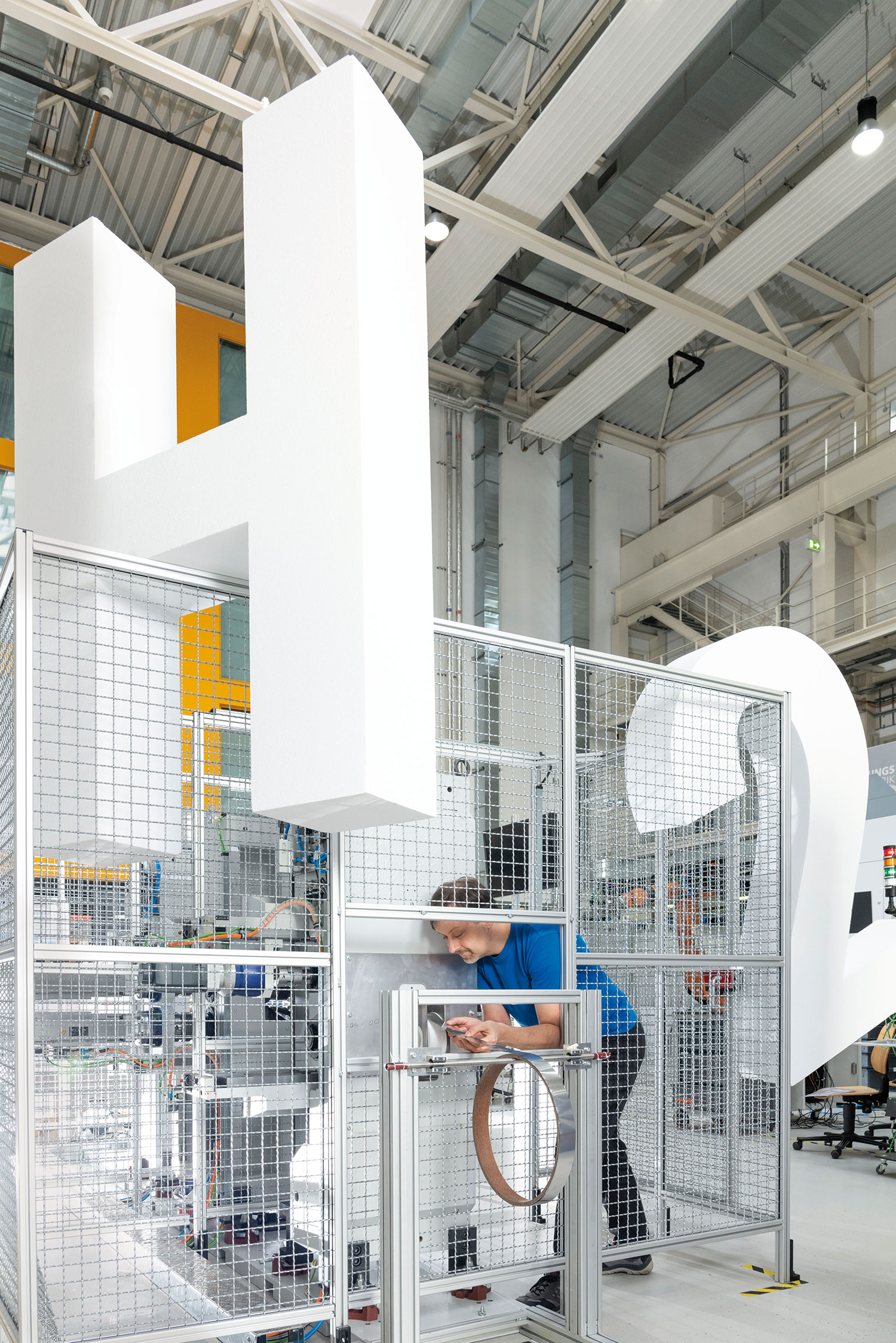Climate change is proceeding faster than expected, the energy transition more slowly than had been hoped. Referenzfabrik.H2 aims to accelerate the production of hydrogen systems and open up new business fields for industries such as the automotive sector, in a push Fraunhofer is calling “Fit4H2.”
Fit4H2 – Training in the Referenzfabrik.H2
Six tiny bolts, six matching nuts, and a whole bunch of transparent, black, and colored rectangles: Even a dollhouse-sized demo version of an electrolyzer stack isn’t exactly child’s play to put together. Twenty heads are bent over the miniature parts here at the training room at the Fraunhofer Institute for Machine Tools and Forming Technology IWU in Chemnitz, as 20 people try to stack the parts in an order that makes sense and then hold them in place. With mixed results: “Could there be an extra membrane left over at the end?”
No, of course not. But it’s not a big deal, either. After all, the two-day Fit4H2 workshop at Fraunhofer IWU is all about learning. The goal is to get people better up to speed on hydrogen technology. The participants have come from companies across Germany, Austria, and the Czech Republic. Most are hoping to glean inspiration and insight for new fields of business to explore, for example because the looming discontinuation of combustion technologies will necessitate broadening their product portfolio – or even require the whole company to pivot. Others are already working in the hydrogen sector and are now looking for ways to optimize processes. Home to five vehicle and engine plants and 780 component and machinery suppliers and service providers in the mobility industry, the state of Saxony is known for its focus on the automotive industry. Some 95,000 jobs are clustered in this sector here, more than 80 percent of them with suppliers.
“Hydrocycle”, a hydrogen-powered motorcycle
“We want to gain insight into the technology and the requirements and challenges involved,” Ulrike Michel-Schneider noted during the round of introductions. She is participating in Fit4H2 with Dušan Poliaček, whose company 1to1design, based in Prague, is part of a German-Czech research consortium that is currently working with Fraunhofer IWU to develop a hydrogen-powered motorcycle. 1to1 design’s role in the Hydrocycle project is to design a sleek, lightweight body that still has enough space to accommodate an entire fuel cell system. With that mission in mind, Michel-Schneider and Poliaček want to know not only how a fuel cell is structured, but also how much it can be shrunk down without impairing its power. Poliaček, a designer, is fascinated by the idea of an H2 motorcycle: “There are already purely electric motorcycles, so there isn’t much room for innovation there.” He also thinks hydrogen will allow for more enjoyable rides over longer distances. “Hydrogen can become an important alternative, including for small vehicles.”





